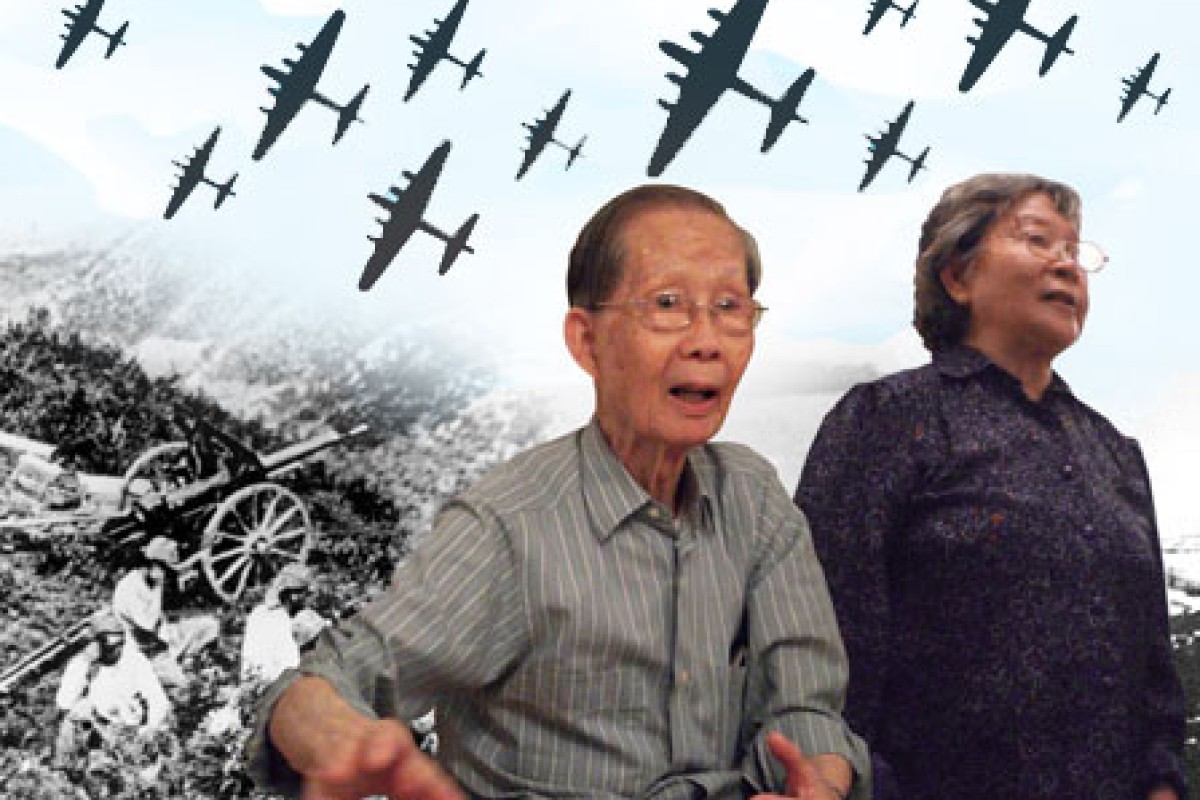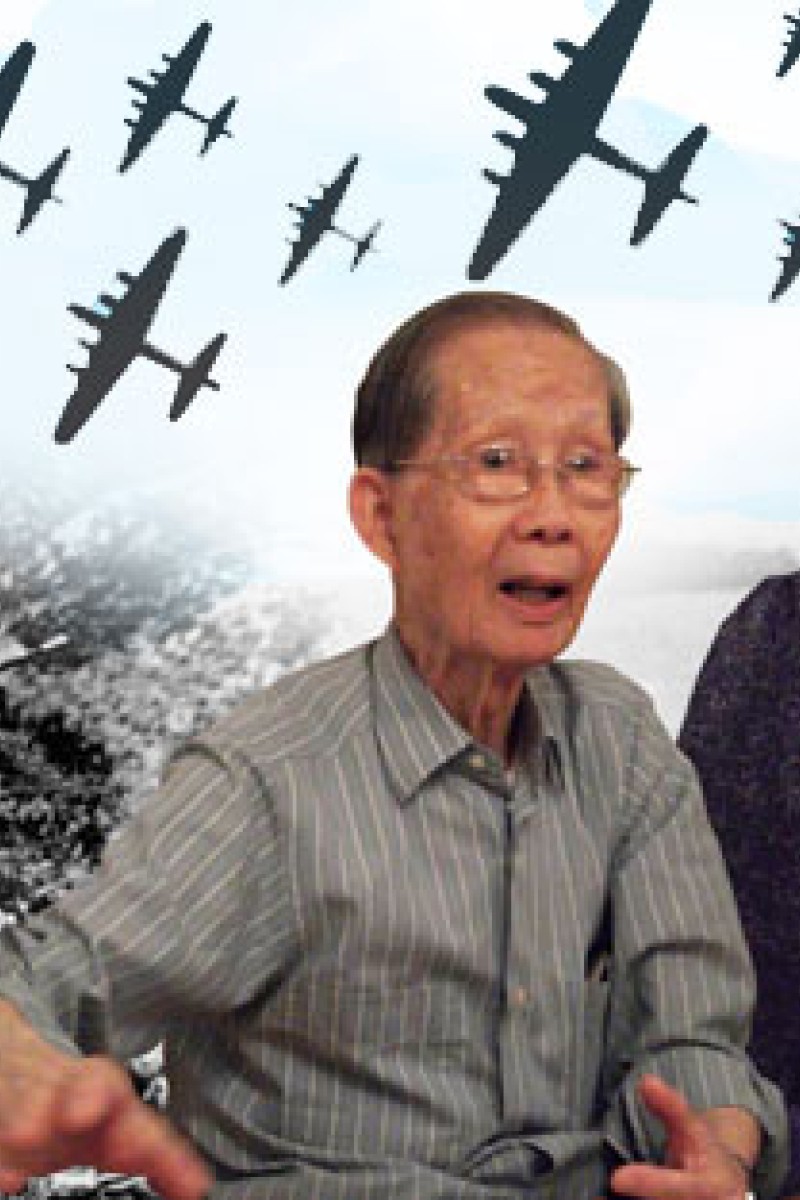 Japanese artillery fire on Jardine's Lookout (left) on December 24, 1941 - the day before the Hong Kong garrison was captured; Poon Wing-chi (left) and his wife recall the fall of Hong Kong in 1941 and the subsequent Japanese occupation.
Japanese artillery fire on Jardine's Lookout (left) on December 24, 1941 - the day before the Hong Kong garrison was captured; Poon Wing-chi (left) and his wife recall the fall of Hong Kong in 1941 and the subsequent Japanese occupation.The British, Canadian and Indian defence forces, supported by Hong Kong volunteers, were heavily outnumbered and they surrendered on December 25.
This day went down in history as "Black Christmas". Three years and eight months of harsh oppression followed until Japan surrendered at the end of the second world war. "Japanese soldiers often came and ransacked our village looking for food and livestock," Poon recalls. "We would have someone keeping watch. When soldiers approached, the lookout would shout a warning. We would set the animals loose so the Japanese would have a hard time catching them."
The Japanese soldiers were bossy and menacing, she adds.
"I once saw a soldier ordering an elderly woman to carry their loot back for them, but she was far too weak. He grabbed her and threatened to kill her with his sword," Poon says.
"The villagers begged him to show mercy. Luckily, a brave young man volunteered to carry the things and the soldier released the woman. Then they left, but the man never came back ..."
The threat to Hong Kong from Japanese forces had existed since 1937, when the Sino-Japanese War began. After Canton (now called Guangdong) fell to Japan in October 1938, thousands of men, women and children were imprisoned, abused and killed.
Yet many Chinese believed that, because Hong Kong was under British rule, it would be safe. So thousands of refugees fled there. In four years, its population rose from 700,000 to 1.6 million.
"Survivors who escaped from the brutal Japanese treatment fled to Hong Kong, and formed a guerilla force near our village," Poon says. "Since we didn't have much faith in the British army, we supported the guerilla forces, offering shelter, food and other daily necessities. It proved well worth it as the Japanese soon invaded."
The first attack - including aerial bombardment - was ferocious, Poon says. Her future husband, Poon Wing-chi, now 90, was working at St Teresa's Hospital, in Kowloon, at the time. "The atmosphere in Hong Kong was very tense," he says. "People were running around panicking. One shell hit the hospital. People inside were prepared for the worst, but fortunately it didn't explode."
Early in 1942, the Japanese began to reduce Hong Kong's population to a "manageable" 500,000. People were rounded up on the street and later murdered; one report suggests 83,500 burials were recorded that year.
The day of Japan's surrender became a public holiday, "Liberation Day". After the handover in 1997, the day became known as "Labour Day".
This is the first in the six best Heritage Detective series covers, written by Hong Kong students. This week's Heritage Sleuths team are Year Seven students at Victoria Shanghai Academy, Aberdeen.
Team
Writer: Angus Leung Shek-ming
Editor: Power Poon Yan-wah
Interviewer: David Luo Kim-fung
Researchers: Avery Choi Kiu-hong, Chun To-yeung
Team leader: Humanities teacher Jay Blackford
